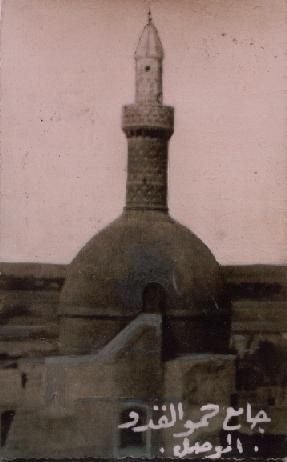Iraq: Isis destroys 19th century Ottoman mosque in central Mosul

Islamic State (Isis) militants have destroyed a 19th century Ottoman-era mosque in the central Mosul Maydan area in the latest attack on Iraq's immense cultural heritage.
The demolition of Hamou Qado mosque, built in 1881 and considered a distinctive sight in the Isis-held northern Iraqi city, comes hours after IS militants reportedly bulldozed the ancient Nimrud archaeological site.
"Isis have demolished the Hamou Qado Mosque, which is one of the oldest landmarks of the religious city," a correspondent for local Mosul TV reported, stressing that IS used the same "demolition tools" (bulldozers) employed in razing Nimrud to the ground.
The report was confirmed by Kuwaiti newspaper al-Rai and on Twitter by Barzan Sadiq, executive producer at Kurdish Rudaw Media Network.
@berhem @GianlucaMezzo ... After a while you will see all the world news agencies will publish this news. pic.twitter.com/KT2G0mAx0p
— Barzan Sadiq (@SeniorB) March 6, 2015
The Hamou Qado Mosque is also known as Abdullah Chalabi bin Muhamad bin Abdul Kadir mosque and is considered one of the oldest landmarks of the city.
The mosque's destruction is the latest in a series of attacks on ancient artefacts and antiquities in Iraq and Syria in the name of an iconoclastic and strict interpretation of Islamic Law.
However, the demolition of an historic mosque - deemed contaminated by the 'old order', in Isis ideology - by the Islamist militants will shock the Muslim world.
Last week, the jihadist group published a video showing militants destroying artefacts in a Mosul museum and at the nergal Gate to ancient Nineveh with sledgehammer and artefacts.
The bulldozing of Nimrud was decried as a lethal attack on the "cradle of civilisation" by archeologists.
"Nimrud was our gem, the best preserved site in Mosul and the most important one," Nineveh Yakou, Assyrian archaeologist and director of cultural heritage and indigenous affairs at campaigning group A Demand for Action, told IBTimes UK. "It's ridiculous, every leader and dictator that ruled in Iraq never dared to touch the site until now."
Located on the Tigris River south of Isis-held Mosul, Nimrud is a 13th century BC site founded by the Assyrian King Shalamansar I. Among the treasures that now could have been either destroyed or looted are the Lamassu, colossal statues depicting winged lions or bulls with bearded human heads, and its bas-reliefs and steles that show scenes of war and hunting.

© Copyright IBTimes 2024. All rights reserved.























